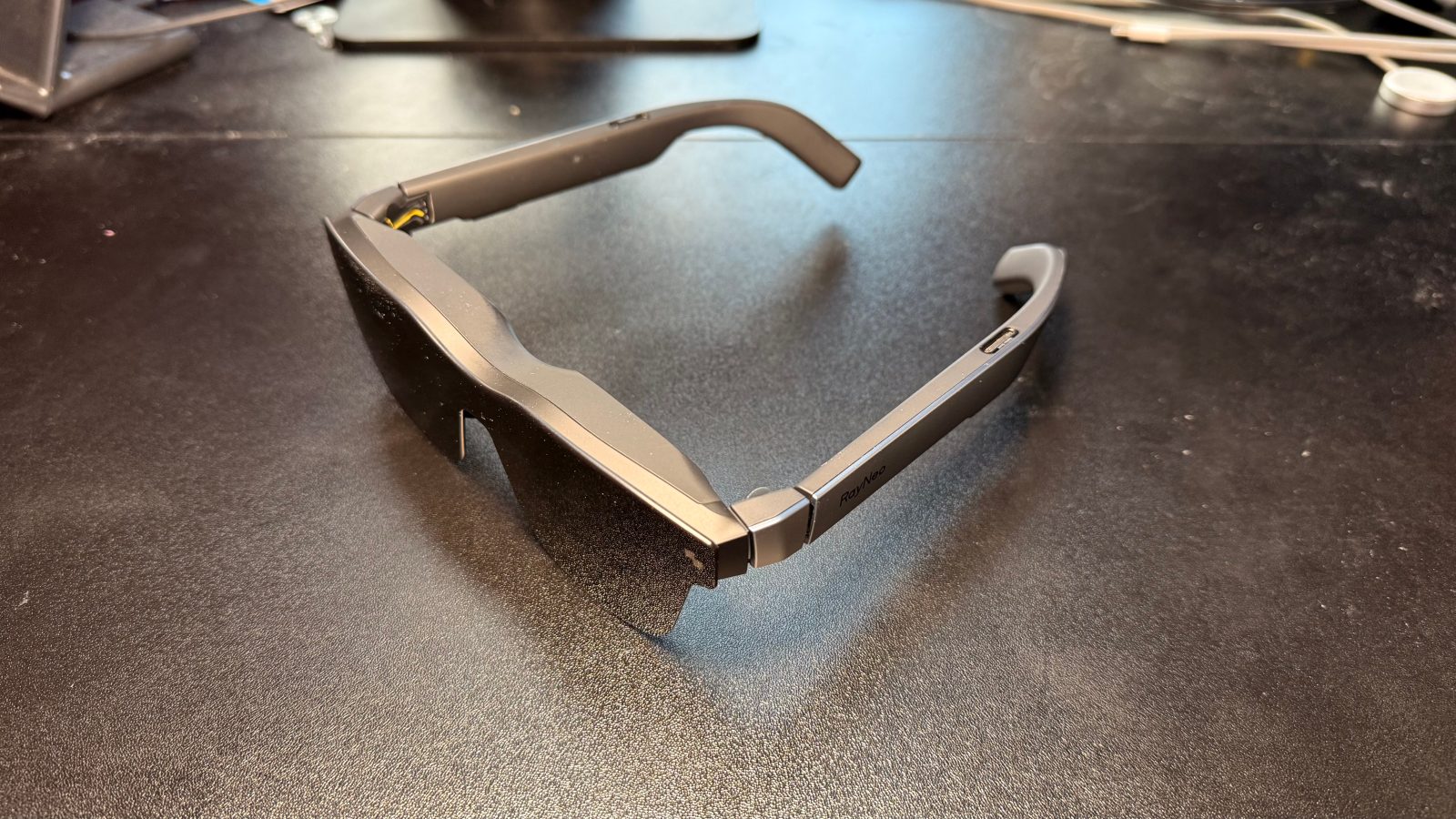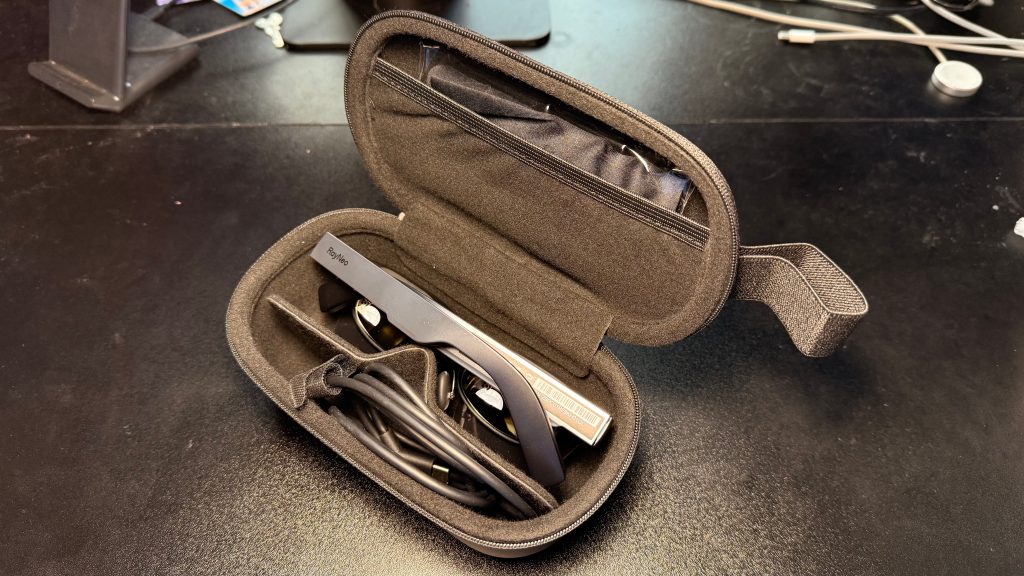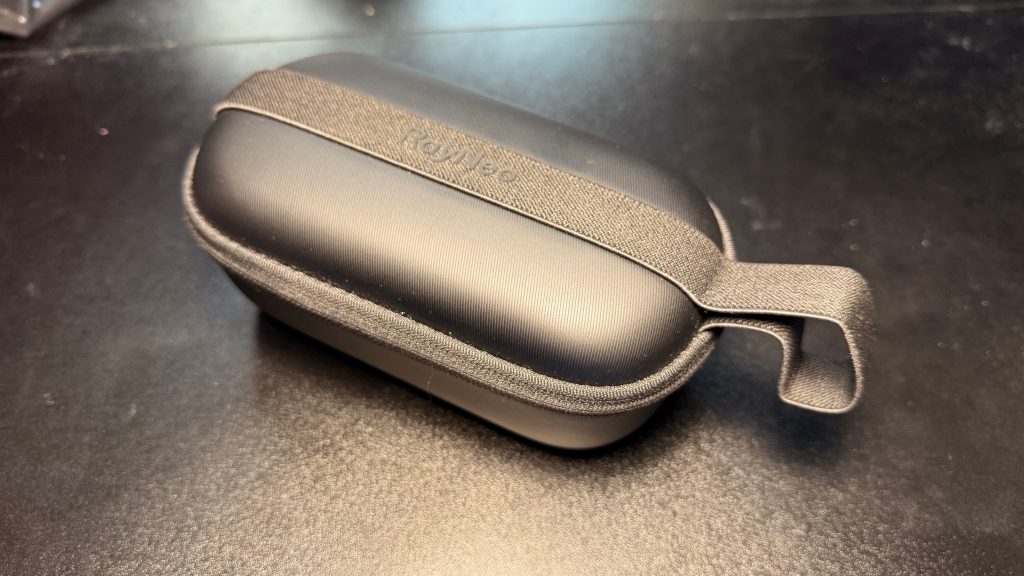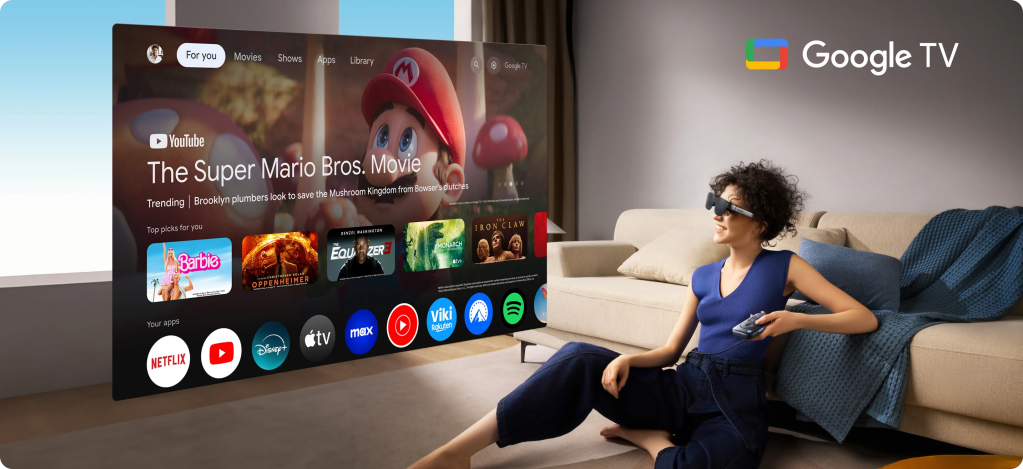
There’s been a lot of talk about augmented reality technology lately, especially with the unveiling of Snapchat Spectacles and Meta Orion. These glasses are both very expensive and inaccessible to consumers, but there is a growing market for affordable glasses, which offer some of the benefits of AR glasses at a much more acceptable price. The RayNeo Air 2 is one of them, and I’m going to share some of my thoughts with you.
How they feel
First of all, these are a $399 pair of glasses (although they’re currently on sale for $319) – so they definitely feel cheap. The front is made from a single sheet of plastic and doesn’t really resemble a pair of glasses aside from the general shape. The frames are definitely very flexible and it’s easy to bend them the other way.
On the one hand, this means that it is a one-size-fits-all product, which is cool because you don’t have to worry about sizing when purchasing. On the other hand, this means that if it doesn’t suit you, you won’t have a good time. It was difficult to get them to sit perfectly on my face without needing constant adjustment. Changing the bridge of the nose (there are several included in the box) helped a little – but overall I’d say it didn’t really suit me. Your mileage there will obviously vary.
Even though the glasses may seem cheap, the unboxing experience certainly wasn’t. RayNeo (a sub-brand of TCL) definitely nailed the packaging. The glasses also come with a quality carrying case, making it easy to slip them into a backpack without worry.


Experience
At this price point, there’s no way to integrate a built-in battery or computer, which means you still have to use them wired with a USB-C port. That’s good, although it means you’ll mainly use it while stationary. It’s difficult to see through the screens, so I wouldn’t recommend trying to use them while moving, although you certainly can.
The actual billboards are pretty good. They offer up to 5,000 nits of brightness, feature a 120Hz refresh rate, and deliver good colors, thanks to Sony’s microOLED panels. The screens are 1920×1080 per eye, which isn’t amazing, but they’re certainly sufficient for reading smaller text. RayNeo claims that these offer a display size of 201″ at a distance of 6 meters, making it similar to a theater experience.
I found myself using them mainly for lying in bed and watching a video or YouTube show. It’s good for that and certainly provides a nicer viewing experience than watching directly on your phone. If you have a good TV, these obviously won’t compare.
One thing they are missing though is coverage for the screens. Other AR glasses I’ve used in the past, like the Xreal Airs, have offered this. A cover is extremely useful when you want something more immersive and want to block all light from getting through. It’s just a small piece of plastic that clips onto the front of the glasses. This would be simple to include. The glasses themselves are quite dark, so it’s not like you’re blinded by the light behind you. It might be better if there was a cover.
Why this makes sense
I think wired augmented reality glasses totally make sense. You can significantly reduce costs by not needing to include any computing power or built-in battery. Plus, you can use them as a display output with anything that can do USB-C video output, like a Nintendo Switch, making them super flexible.
The main disadvantage here is that you do not have a suitable operating system. RayNeo sells an accessory called “Pocket TV,” which lets you run the Google TV operating system when plugged in. The accessory also serves as a remote control.

Apple is also reportedly exploring a product similar to this, essentially selling a Vision headset that feeds off your iPhone – with the headset actually just containing the screens. For cost reasons, this approach certainly makes some sense.
My verdict
Overall, this is a nice pair of glasses to enhance the multimedia experience on your iPhone, especially if that’s your primary way of watching content. The screens are very bright and pleasant to look at. Its speakers are also pretty nice.
For $319, they’re definitely not the best in every way, but if something like this product sounds appealing to you, it’s an easy purchase – provided it fits you well. Plus, unlike a standalone headset, you won’t have to worry about them being dead when you finally want to use them.
Follow Michael: X/Twitter, Bluesky, Instagram
FTC: We use automatic, revenue-generating affiliate links. More.


